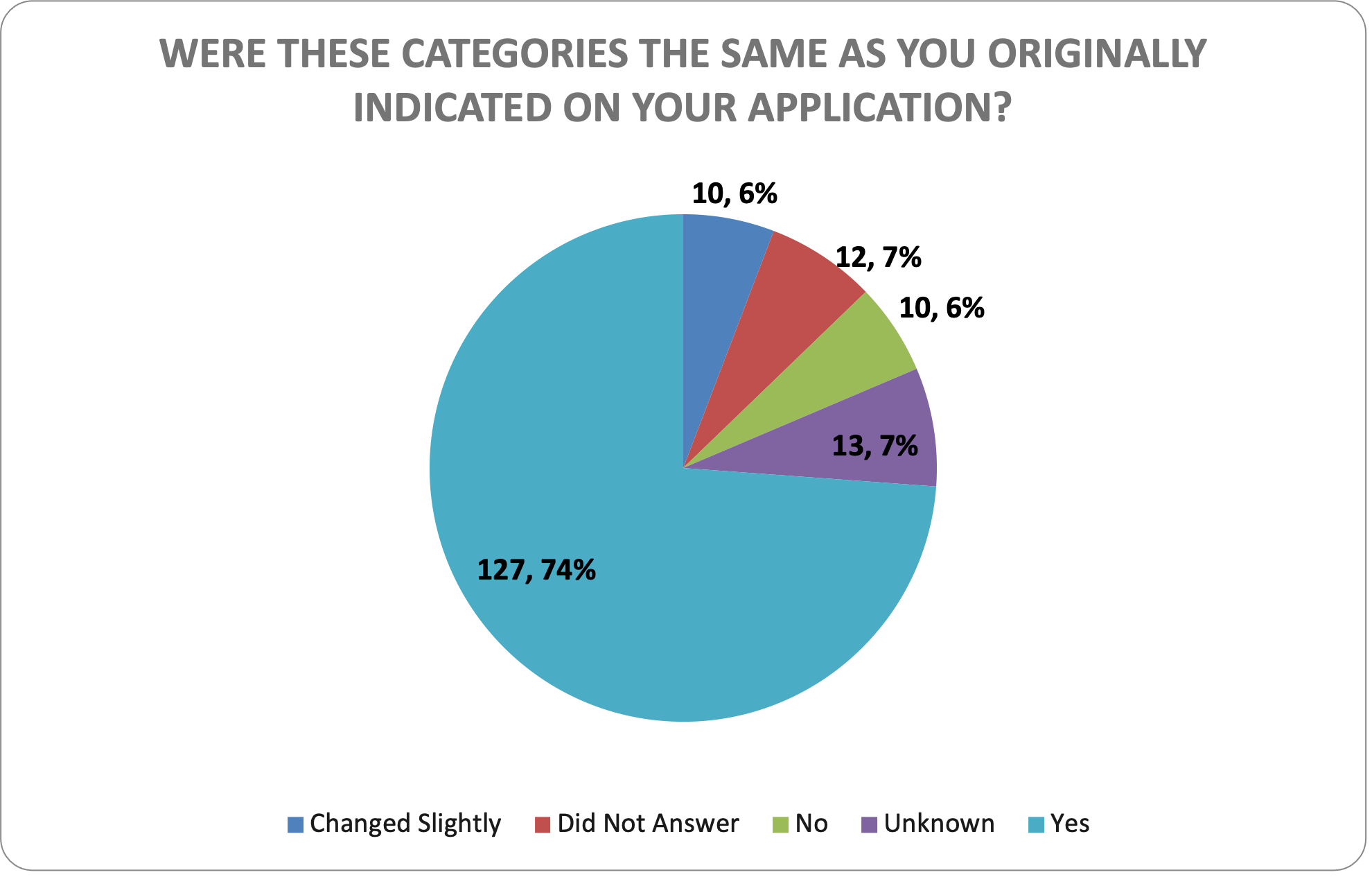Health and Mental Health Grants
The Need
The COVID-19 pandemic continues to impact communities, families and child care providers significantly. These grants are designed to improve the well-being of adults supporting children and families to create a positive, engaging and reciprocal caregiving environment.
The Strategy
Providers can apply for grants to cover costs for an approved list of goods and services, including training, mental health counseling for their workforce and families, social-emotional and health screenings for children, family health education and access to child care health consultants. This grant supports the mental health of child care providers, reducing turnover and keeping child care environments staffed and operational. It also supports children and families by increasing access to screenings, family education and referrals to preventative care. This competitive grant was awarded on a first-come, first-serve basis.
Key Outcomes and Learnings
Impact
763 providers from 53 counties received funding, totaling $5,400,000.
Learning
- 88% of applicants endorsed wanting to fund in at least 6 of the listed categories, indicating a high diversity of needs.
- Funding for Materials/supplies (90%) and Social Emotional Learning Environment Enhancements (87.7%) were the most sought-after among all applicants.
- Funding for Physical Safety is also highly sought after (79.6%) among all applicants.
Further learnings are detailed below.

Funding
Amount: $5,400,000
Source: American Rescue Plan Stabilization
Expiration: September 30, 2023
Next Steps
All follow-up survey data will be shared with applicable stakeholders to assist in identifying the overall need for these grant dollars as well as areas of improvement for potential future opportunities.
Expanded Impact and Learnings
CDEC received over 800 applications in five days, forcing the application process to close early (previously expected to remain open for two months). CDEC quickly understood the vastness of the various needs of providers as it relates to the Health and Mental Health of their staff and children in their care.
All grantees received funds by October 2022. Award amounts were based on Licensed Capacity, averaging $100 to $150 per child (see more details in the Applicant Guidance Document).
Through this process, significant need was identified for items that were not allowable under this federal funding stream, these include:
- Cosmetic updates to staff areas: Some applicants noted they do not have a designated space for staff breaks. Applicants stated that creating a break area would promote quiet relaxation, decrease burnout and increase retention. Expenses would include paint, rugs, diffusers, plants, devices for soft music, etc.
- Perishable food items: The purchase of healthy food and drinks for staff break rooms was desired. Some applicants requested subscription boxes such as Nature Foods, Home Chef, etc., as well as tea subscriptions.
- Memberships: Fitness, app-based memberships, recreation centers, etc.
- Massage chairs for staff break rooms
- Large fitness equipment, such as stationary bikes, treadmills, large weight sets, etc.
- Self-care boxes and subscriptions for staff

7-Month Follow-Up Survey Results
A follow-up survey was sent to all grantees on May 1, 2023, and received 173 responses. This survey asked questions in regards to how providers spent their funds compared to how they initially thought they would spend their funds, top two priority needs, any barriers/disappointments, wins and overall satisfaction.
An informational slide deck is available to review follow-up survey results from July 2023.

- 148 providers (85%) expressed interest in receiving future Health and Mental Health Grant Opportunities.
- 82 providers (48%) were awarded $1,500 in grant funding (Capacity 5-14).

Anticipated vs. Realized Needs
- 91 respondents (53%) indicated that they used funds toward mental health supports that facilitated health and well-being. Examples include providing counseling, postpartum support, paid time off, etc.
- The biggest benefit indicated was the ability to purchase materials and/or supplies and the second biggest benefit indicated was mental health supports for employees.

About three-quarters of respondents (74%) stated the funds were spent in categories that were consistent with their original intention at the time of their application. Another 6% said their needs changed slightly.

Wins and Opportunities
- Respondents overwhelmingly felt the application process was smooth, 95% gave it a ranking of 4 or 5.
- Only one respondent indicated that they did not benefit from their award.
- The biggest benefit indicated was the ability to purchase materials and/or supplies and the second biggest benefit indicated was mental health supports for employees.

Awardees indicated that employees received the largest benefit from this award.
- They were able to provide paid time off (PTO), pay for trainings and counseling, outfit relaxation rooms and provide additional funding to prioritize the mental health of their employees. Some respondents noted how important these supports were to retaining staff.
Children also benefited from this funding.
- There was a fairly equal split between the type of supports for children this funding afforded.
- Many respondents noted the ability to bring in activities that encourage movement such as yoga, gardening or sports enrichment.
- Other respondents mentioned that they were able to outfit cozy corners for children and provide them with books or dolls that helped them learn to self-regulate.
- One respondent shared that she was able to provide a student with dental supplies he had never had before.
Respondents also shared how this funding impacted families.
- Some offered financial assistance to families to ease the cost of child care and therapy services. Others were able to connect families with previously unattainable health and mental health resources.
- There was a general sense of accomplishment and gratitude for being able to provide themselves, their employees, their children and their families with health and mental health supports in a way they could not before.
Provider Success Stories
“My teachers received monthly chair massages during a long, cold winter which helped them to relax and created an environment in which they felt appreciated and valued. I believe that this, in turn, helped me to keep all my teachers through the whole school year! My students received 30 minutes of yoga and mindfulness classes at the school each week all winter as well, which helped their mental health and taught them ways in which to calm their bodies and minds. They loved it!”
“I purchased dental supplies for my center and this boy said, Thank you, thank you, I never had a toothbrush! My heart grew knowing the impact it had on him and how grateful he was. Happy story!” “ Having a professional to vent my frustrations to, not feeling alone.”
“This grant has helped in teaching these kids how to take care of the simplest daily routine like brushing teeth. Thank you.”
“One thing we did as a staff that was extremely beneficial for their mental health and gave them ideas for their teachings was attending a meditation class together.”
“Ability to give teachers days off and trainings that we could not afford. Also able to fund dental insurance for my staff this year.”

- The majority of respondents (76%) indicated that they did not encounter any challenges or barriers when engaging with this grant process or spending their award.
- Of those that did experience challenges, the biggest challenge was coordinating third parties (20). There were struggles finding someone who offered the services they were seeking in the hours and/or timeline they needed that would be covered by the award amount they received. (Example: Mental Health Consultants unavailable or did not have the capacity.)
- “Other” respondents (2) noted confusion or frustration around the documentation they needed to keep pertaining to how they spent their award and interpreting the requirements to ensure they spent the money appropriately.
Provider Barriers and Challenges
“We desperately need a mental health consultant for our staff and children who is dedicated only to Archuleta County. I especially wanted to spend our funds on a mental health consultant, but it was not sustainable, and worst of all, we couldn't find anyone!”
“It would have been nice to include mental health categories for home daycare providers since we are the only employee we also need to take care of ourselves. “It would have been nice to be able to do off site yoga/mediation, or massages for ourselves since this is something that cannot be offered on site during business hours.”
“I wish we could have been able to use the funding for a wellness benefit, such as a gym membership.”
“Shortage of mental health consultants accepting new clients.”
“Availability of practitioners to provide the trainings, wellness sessions, etc.”
“More staff related supports”
The below photos were provided and approved for sharing by Anchor Learning Center for Blind Children, which used these funds to put on a “Yoga Days” project for their students.




